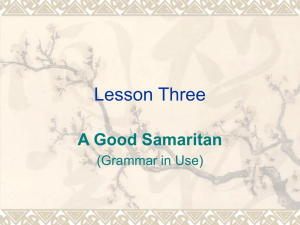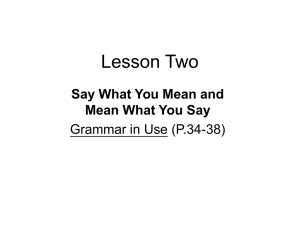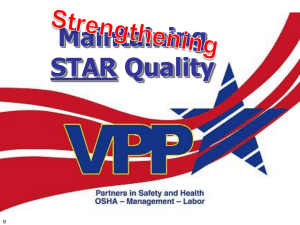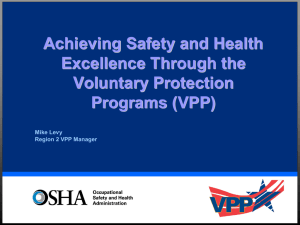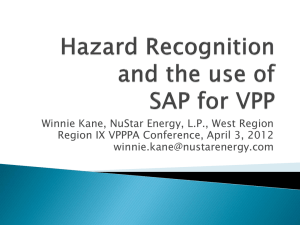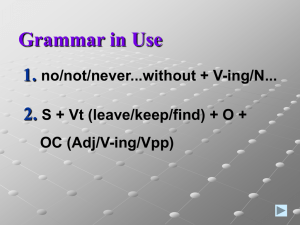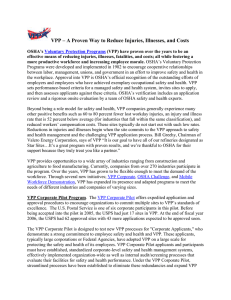American Society of Safety Engineers
advertisement
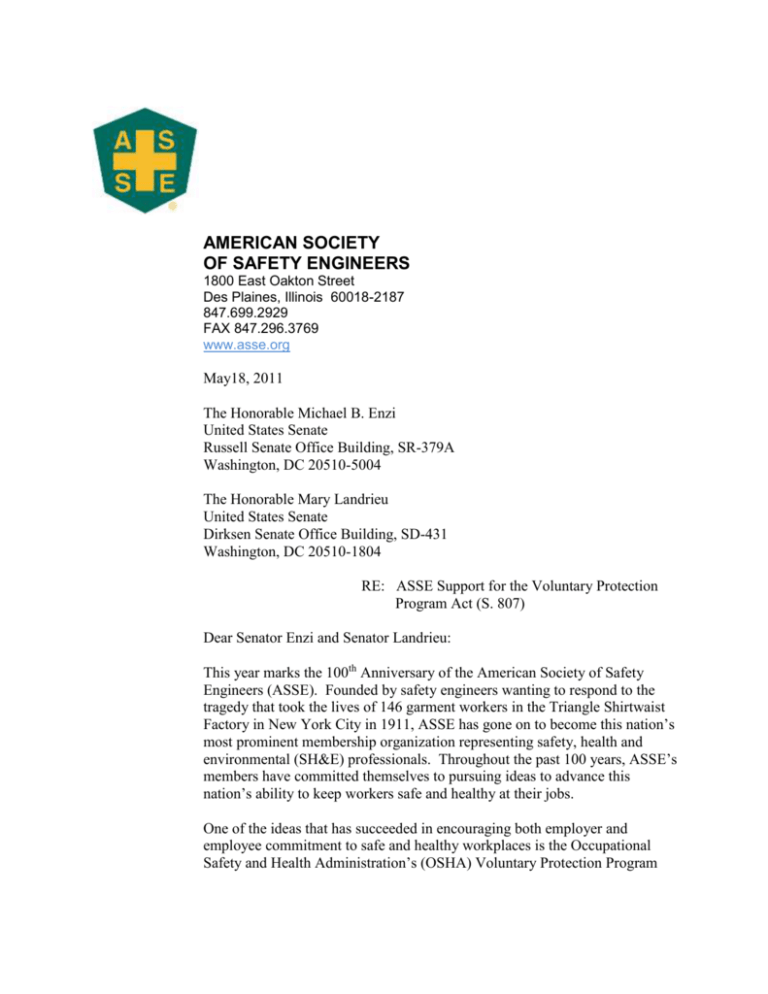
AMERICAN SOCIETY OF SAFETY ENGINEERS 1800 East Oakton Street Des Plaines, Illinois 60018-2187 847.699.2929 FAX 847.296.3769 www.asse.org May18, 2011 The Honorable Michael B. Enzi United States Senate Russell Senate Office Building, SR-379A Washington, DC 20510-5004 The Honorable Mary Landrieu United States Senate Dirksen Senate Office Building, SD-431 Washington, DC 20510-1804 RE: ASSE Support for the Voluntary Protection Program Act (S. 807) Dear Senator Enzi and Senator Landrieu: This year marks the 100th Anniversary of the American Society of Safety Engineers (ASSE). Founded by safety engineers wanting to respond to the tragedy that took the lives of 146 garment workers in the Triangle Shirtwaist Factory in New York City in 1911, ASSE has gone on to become this nation’s most prominent membership organization representing safety, health and environmental (SH&E) professionals. Throughout the past 100 years, ASSE’s members have committed themselves to pursuing ideas to advance this nation’s ability to keep workers safe and healthy at their jobs. One of the ideas that has succeeded in encouraging both employer and employee commitment to safe and healthy workplaces is the Occupational Safety and Health Administration’s (OSHA) Voluntary Protection Program 2 (VPP). ASSE has been a consistent voice in support of VPP and offers its support for your bill, the ‘‘Voluntary Protection Program Act’’ (S. 807) to ensure that every Administration supports VPP and the Safety and Health Achievement Recognition Program (SHARP) by including the program in the Occupational Safety and Health Act of 1970. Our members typically are the individuals responsible for establishing VPP for employers. From that front line experience, they know that VPP is effective in helping employers achieve and remain committed to achieving safe and healthy workplaces. As VPP is implemented in an organization, they consistently witness the dynamic adoption of the risk-based approach to managing safety and health risks that VPP encourages. They also witness significant organizational improvements in communications and cooperation between management and workers over safety and health. These are text book results of good safety and health management, results that cannot be achieved simply through compliance to OSHA standards. In that, VPP is unique in encouraging employers not simply to meet regulatory standards but to take active responsibility for safety and to seek results beyond the minimum. The evidence we have about VPP’s effectiveness supports our members’ view. The average VPP worksite has a Days Away Restricted or Transferred (DART) case rate that is 52% below the national industry averages. According to the Bureau of Labor Statistics, VPP sites have Total Case Incident Rates (TCIR) 54% below industry averages. The National Safety Council has reported that, in 2007, VPP sites saved private industry $300 million and federal agencies $59 million. However, as the Government Accounting Office’s 2009 report on VPP (http://www.gao.gov/products/GAO-09-395) concluded, more oversight about VPP’s effectiveness is needed. We are confident that, the more we know about VPP, the more its value to this nation’s oversight of workplace safety and health will be demonstrated. Also, the more information demonstrating the value of VPP that employers have, the easier it will be for those employers to establish a business case for allocating the resources needed to pursue VPP in their operations. Developing and communicating meaningful performance metrics both ensures the effectiveness of the program and creates stronger rationale for employers to participate. That is why we are pleased you have included in the bill Section 2(b)(3)(C) to require OSHA to establish “a system for monitoring the performance of the voluntary protection program by developing specific performance goals and measures for the program.” If practicable, every OSHA program should meet the same requirement. ASSE also fully supports inclusion of Section 2(b)(5) that would bar any Administration from requiring payment from an employer to qualify for or participate in VPP. As we have often said, our members do not help employers achieve safety simply through enforcement of an organization’s safety rules. They use encouragement, education and building relationships as well as working with employers to enforce tough rules. Achieving safe and healthy workplaces is a multifaceted endeavor. ASSE supports a fully funded OSHA, but only one that 3 works both to demand and encourage employers’ commitment to their workers’ safety and health. Requiring payment from VPP employers will only result in fewer employers engaging with OSHA and, so, fewer employers implementing injury and illness protection programs, less cooperation between employers and employees in achieving safety and health, and, ultimately, an OSHA that will be more hard pressed to meet its mission of helping to protect workers. Thank you for your bipartisan commitment to safer and healthier workplaces. Whatever ASSE and its members can do to help you achieve passage of this legislation, we encourage you and your offices to let us know. Sincerely, Darryl C. Hill, Ph.D., CSP President
